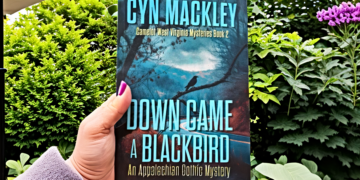Consider The Persimmon: Recipe Ideas
Orange, round, green stem, edible. Product of autumn days, falling leaves, waning daylight hours.
Pumpkins, you think, visualizing carved teeth in an upturned smile, full-length black dresses with pointed hats, and other Halloween paraphernalia.
Well, you’re close but not correct.
Think small. Consider the persimmon, the seldom-consumed, baseball-sized orange food item arriving in only a few markets each fall. Your local grocery store may stock them next to the apples and pears. Botanically speaking, they should be in the berry section given that they grow three layers, have a lower sugar content than regular fruit and contain two or more seeds.
Back In The Day
Growing up in southern Ohio, I rambled on my family’s small farm. My mother often prepared an impromptu picnic which we ate alongside our babbling brook running into Yankee Fork, threatened only by poison ivy. She would return to the house, and I would continue climbing up the hill, ducking under the barbed wire separating the uncultivated section from the farmed acres.
Alone, I sat overlooking the valley, hearing the train thundering miles away in the distance. One autumn as I explored, I discovered the wild side had a tree standing alone on the hillside. Brilliant orange shapes hung from its limbs. I picked a couple and carried them home to question my mother about them. Aside from the name, I no longer recall what she told me, but it was enough to encourage me to taste a slice.
Thanks to the tannin, I spit my first persimmon bite out in disgust and wanted no more to do with the revolting taste. I forgot about the tree and the taste — until years later when I arrived in China to work. Past the bins of onions, rows of leafy greens, and near fresh fish tanks, persimmons displayed their pudgy orange and sometimes reddish bodies in large or small markets. Soon I was consuming at least one persimmon per day. How I could have grown up so near this taste treat yet have no idea about its magnificence when it’s ripe? Eaten before its time, your mouth could pucker for several minutes while you try to remove the tart, bitter, sour, and obnoxious flavor. You won’t forget it.
Memory and Passion Ignited
These Chinese persimmons were ripe, luscious, juicy, and delicious. They created a memory I wanted to keep and figure out how to repeat. Persimmons originated in China. More than 2,000 types now exist, resulting from selective breeding. Well-known in Japan and Korea, they came to California in the 1800s. But when and how did persimmons arrive in Ohio? Did a Native American grind the seeds for a coffee substitute, maybe planting a tree on my hillside?
The family persimmon tree may have never developed sweet flavors since wild ones sometimes do not. Perhaps that’s why no one wanted to make the long walk up the hill to harvest from it. I have wondered why someone planted it so far away from any houses. And who planted it? Was there another persimmon tree nearby, even a grove, that I didn’t see? More questions with no answers.
In China, I rarely cooked and grabbing a persimmon or two provided a great snack. I split them open, slurping the juice. Then I’d systematically suck out the gooey insides, juice running down my face. Usually, I ate the rind. This was all in the privacy of my apartment. I didn’t want to share. The experience was too delicious.
Ways To Enjoy
Returning to the U.S., I was thrilled to find that major grocery markets had discovered persimmons. Extremely ripe, soft, and divine persimmons last only a short time. I carefully checked to make sure the ones I bought were a bit soft, not squishy but cushy enough to encourage finger-licking behavior.
I sliced, grilled, or roasted them, added a slice of prosciutto, and placed them in a ciabatta roll along with a slice of provolone. Searching for something unusual to delight dinner guests, I split them in half, sprinkled on cinnamon, ginger, vanilla, honey, or maple syrup, plus lemon juice, baked, or grilled them, and served them hot with vanilla ice cream.
Fuyu persimmons have become the most popular in the U.S., but other cultivars are available in a few locations. Even with a bit of sugar added, guests are glad to know that the persimmon is stuffed with antioxidants, vitamin C, beta-carotene, iron, and a host of other nutritional goodies.

Add persimmons to salads, mix them into a stir fry, maybe whip up a persimmon soufflé, or create your own dish. Dry them and add to an old-style Christmas pudding or fruitcake. They’re also perfect to nibble on during winter when you’re browsing garden catalogs and thinking about where and when you will plant your persimmon tree next spring.
Here’s the Salad Recipe from Alwaysravenous.com
- 5 oz. mixed salad greens
- 2 fuyu persimmons, peeled, quartered, and thinly sliced
- 1/4 cup pomegranate seeds
- 1/2 large fennel bulb, thinly sliced
- 1/3 cup walnuts, toasted
- scant 1/3 cup crumbled plain goat cheese
For more interesting ways to enjoy your newly found adventure food just visit cookingontheweekends.com


















































































